In medieval and early modern times, our Dutch ancestors (and many other Europeans) buried their death in, under and around their churches. Those who could afford it had a memorial, often in the form of an inscription on their grave. If you visit an old Dutch church, you are often walking over the graves. Look down, at the floor of the church, and you may see the inscriptions, sometimes worn away after centuries of walking over them, sometimes surprisingly well kept, sometimes restored recently to their former glory.
Last month I visited the St Bavo Church in Haarlem, province Noord-Holland. Today, I share a few of the grave memorials that I saw there.
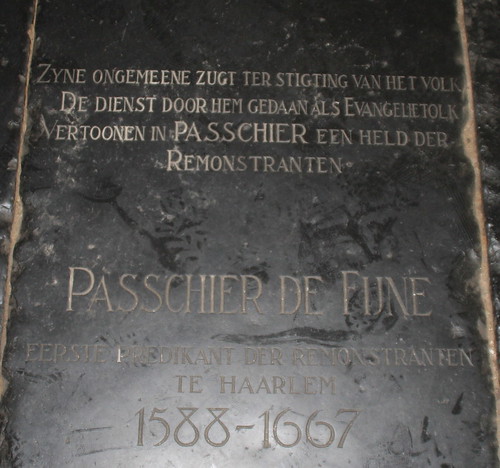
The first grave belongs to Passchier de Fijne, a pastor of the Remonstrants in the 17th century. The (Dutch) inscription:
Zyne ongemeene zugt ter stigting van het volk
De dienst door hem gedaan als Evangelietolk
Vertoonen in PASSCHIER een held der Remonstranten
Passchier de Fijne
Eerste predikant der Remonstranten te Haarlem
1588-1667
His uncommon drive to edify the people / The service done by him as preacher of the Gospel / Make PASSCHIER a hero of the Remonstrants.
Passchier de Fijne, First pastor of the Remonstrants in Haarlem, 1588-1667.
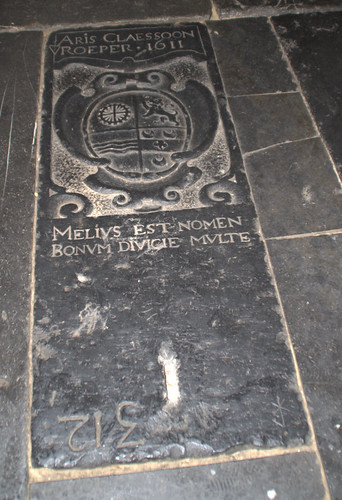
The next grave belongs to Aris Claessoon Vroeper, who was apparently buried here in 1611. His epitaph (in Latin) is Melius est nomen / Bonum divicie multe, which I think means: A good name is better than many riches. Please leave a comment below if you know the meaning or origin of this epitaph.
I don't know anything about the occupant of this grave. If you do, please let me know.
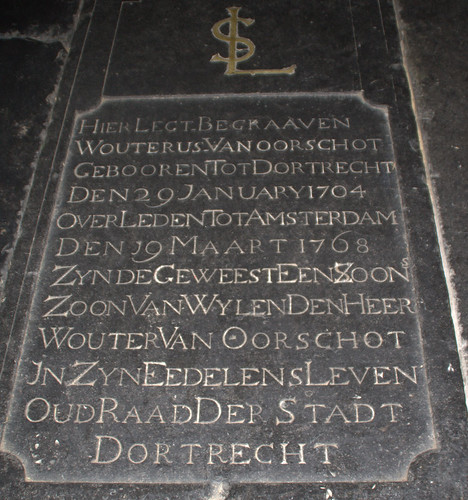
Next up: Wouterus van Oorschot. His inscription (in Dutch):
Hier legt begraaven Wouterus van Oorschot, gebooren tot Dortrecht den 29 January 1704, overleden tot Amsterdam den 19 Maart 1768, zijnde geweest een Zoons Zoon van Wylen den Heer Wouter van Oorschot, in zyn Eedelens Leven Oud Raad der Stadt Dortrecht.
Rough translation: Here lies buried Wouterus van Oorschot, born in Dordrecht 29 January 1704, died in Amsterdam 19 March 1768, having been a son's son of the late sir Wouter van Oorschot, who was in His Honourable's life former council of the city Dordrecht.
It seems that Wouterus' main claim to fame was the fact that he was the grandson of Wouter van Oorschot, who was probably well-known at the time, but now forgotten. Wouterus' name still lives on in the Hofje van Oorschot, a courtyard surrounded by almshouses in Haarlem, which was built after his death and largely financed out of his estate.

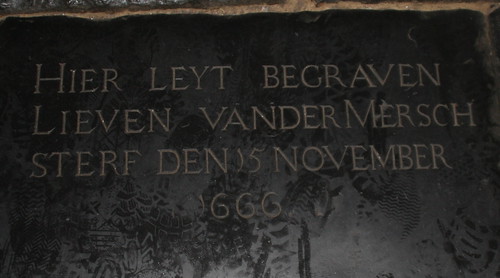
Hier leyt begraven Lieven van der Mersch sterf den 15 November 1666 (Here lies buried Lieven van der Mersch died 15 November 1666). I don't know anything about this person, but there is a genealogy of Lieven van der Mersch online.
In the closeup photo of the tombstone you can clearly see footprints: The floor of this part of the church is covered with tombstones, so church-goers have no choice but to walk over the graves.
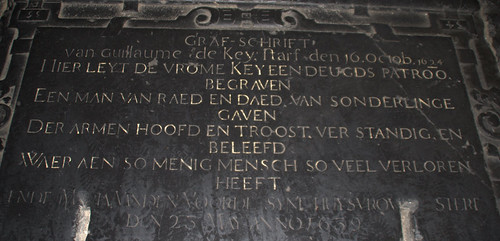
The last tombstone I present today is that of Guillaume de Key and his wife Maria van den Voorde. Searching Google I found some genealogical data about this couple (I did not verify anything, so use at your own risk). Let's have a look at the text on his stone:
Grafschrift
van Guillaume de Key, starf den 16. Octob[er] 1624
Hier leyt de vrome Key een deugds patroo[n] begraven
Een man van raed en daed, van sonderlinge gaven
Der armen hoofd en troost, verstandig en beleefd
Waer aen so menig mensch so veel verloren heeft.
Ende Maria van den Voorde syne huysvrouw sterf den 23 May anno 1639.
Rough translation (without the rhyme that is present in the Dutch text): Epitaph / of Guillaume de Key, died 16 October 1624 / Here lies buried the pious Key, a patron of virtue / A man of word and deed, of extraordinary talents / Head and comfort of the poor, sensible and polite / In whom so many people lost so much. The last part of the inscription was added later: And also Maria van den Voorde, his wife, died 23 May 1639.
Labels: Cemeteries, Church, Noord-Holland, Tombstone Tuesday


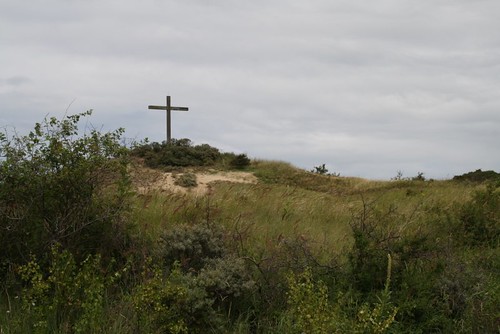
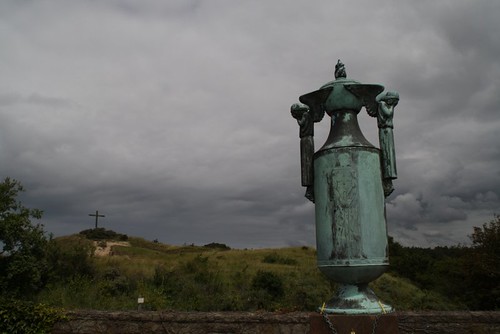



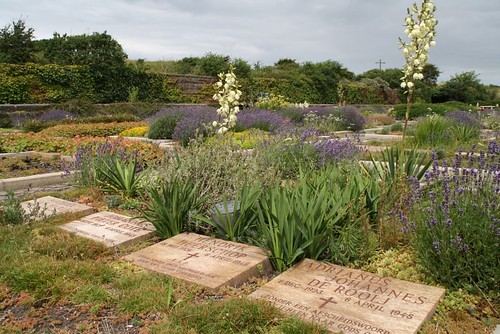






















2 Comments:
Have a grandmother last name Nelissen in the Netherlands could that be Spanish descent?
Nelis is short for Cornelis. Nelissen means ‘son of Nelis’. A very typical Dutch name!
Post a Comment
<< Home